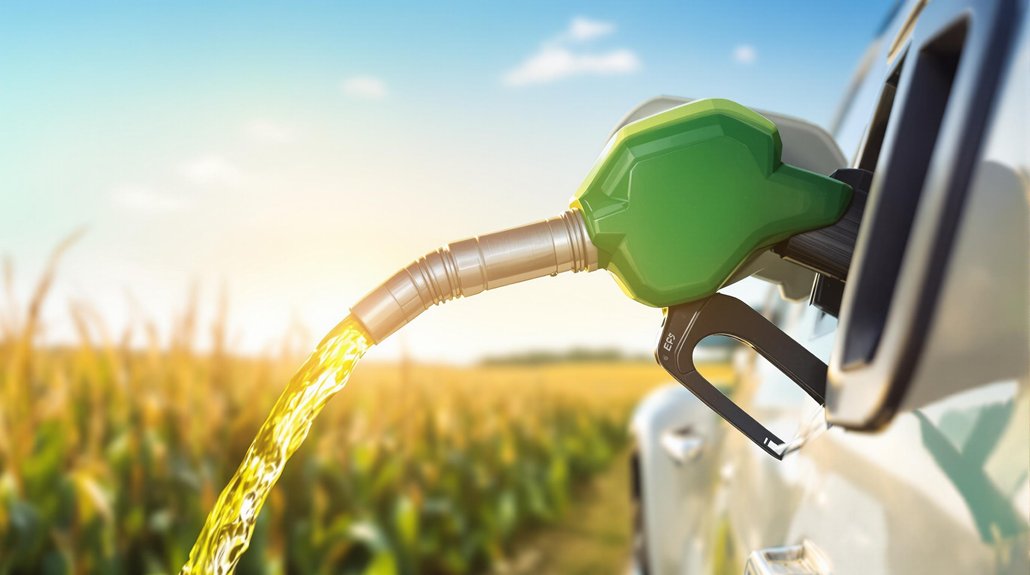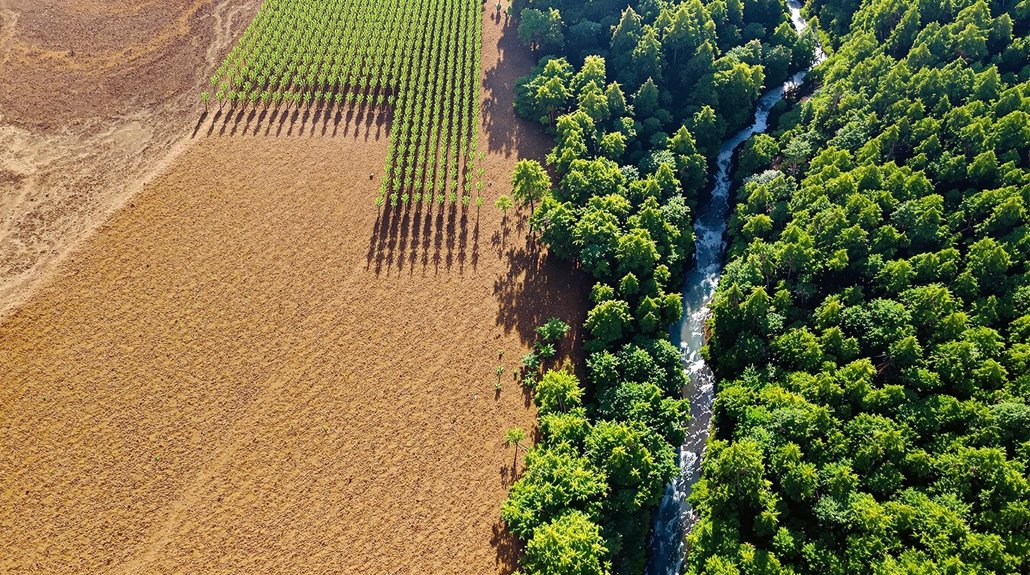Biofuels power various transportation modes as alternatives to fossil fuels. Ethanol blends like E10 (10% ethanol) work in standard vehicles, while E85 requires flex-fuel vehicles. Biodiesel, often used as B20 (20% biodiesel), powers diesel engines with minimal modifications. Biojet fuel mixes with conventional jet fuel for aviation. Renewable diesel serves as a drop-in replacement for regular diesel. These fuels reduce greenhouse gas emissions while supporting energy security. The transportation sector’s shift to biofuels continues to evolve.

As the world seeks cleaner alternatives to traditional fossil fuels, biofuels have emerged as a significant option in the transportation sector. These renewable fuels are made from plant materials and animal waste, offering a way to reduce greenhouse gas emissions while supporting rural economies.
The most common biofuel is ethanol, which is typically blended with gasoline. In the United States, most drivers use E10 fuel, which contains 10% ethanol and 90% gasoline. Flex-fuel vehicles can use E85, a blend with 51-83% ethanol. Biodiesel, made from vegetable oils and animal fats, is another popular option. It’s often used in a B20 blend, containing 20% biodiesel and 80% petroleum diesel.
Ethanol and biodiesel dominate the biofuel market, appearing in everyday fuel blends like E10 and B20 at your local pump.
Renewable diesel serves as a “drop-in” fuel, meaning it can directly replace conventional diesel without engine modifications. Likewise, biojet fuel can be blended with traditional jet fuel up to 50%, helping reduce aviation’s carbon footprint. Sustainable biofuels can achieve 32% to 98% reduction in greenhouse gas emissions compared to fossil fuels. Biomethane, produced from organic waste, functions as a renewable natural gas in some vehicles.
The benefits of biofuels extend beyond environmental concerns. They improve energy security by reducing dependence on imported oil. They’re also biodegradable and less toxic than fossil fuels. Most importantly, they’re compatible with existing engines and infrastructure, making the shift easier. Biofuels are increasingly recognized for their ability to enhance energy security and provide a pathway to reduced climate change impacts.
Global biofuel production is substantial and growing. The United States produced 18.7 billion gallons in 2022, with Brazil, the EU, and Indonesia accounting for most of the remaining global demand. Experts predict a 35,000 MLPY growth globally from 2022-2027.
Government policies play a vital role in promoting biofuel use. The Renewable Fuel Standard in the US, the RED II in the European Union, and various national policies worldwide create markets for these fuels.
Despite their advantages, biofuels face challenges. Production costs remain higher than fossil fuels. Some crop-based biofuels raise concerns about food supply competition.
Future trends point toward advanced biofuels made from non-food crops, algae, and other novel sources to address these concerns.
Frequently Asked Questions
What Are the Environmental Impacts of Biofuel Production?
Biofuel production has mixed environmental impacts.
While it can reduce greenhouse gas emissions by 20-60% compared to fossil fuels, it often causes deforestation and habitat loss.
It competes with food crops for land and can lead to soil degradation.
Water issues include increased consumption, pollution from fertilizers, and aquifer depletion.
Air quality effects vary, with some pollutants decreasing while others may increase.
How Do Biofuel Costs Compare to Conventional Fossil Fuels?
Biofuels generally cost more than fossil fuels.
Biodiesel can be 70-130% pricier than regular diesel, while bioethanol costs about 100% more than gasoline. These higher costs stem from feedstock prices, production processes, and scale limitations.
In the U.S., some biofuel blends like B20 biodiesel ($3.53/gallon) and E85 ethanol ($2.74/gallon) are competitive with conventional fuels.
Without government subsidies, most biofuels aren’t cost-competitive yet.
Can Existing Vehicles Use Biofuels Without Modifications?
Most vehicles can use some biofuels without modifications.
Nearly all gasoline cars can run on E10 (10% ethanol), and models from 2001 onward can use E15 (15% ethanol).
For diesel engines, B5 (5% biodiesel) works in any vehicle, while B20 (20% biodiesel) suits many newer models.
Only Flex Fuel Vehicles can use high-ethanol blends like E85.
Boats, motorcycles, and lawn equipment shouldn’t use higher ethanol blends.
What Crops Are Most Efficiently Converted Into Transportation Biofuels?
The most efficient crops for biofuel production vary by type.
Sugarcane and sugar beets lead for ethanol, with yields of 662 and 714 gallons per acre respectively.
Oil palm dominates biodiesel production at 508 gallons per acre.
Emerging options include algae, which could produce 5,000-15,000 gallons per acre.
Efficiency factors include land use, energy balance, water needs, and geographic suitability.
How Do Biofuels Affect Food Security Globally?
Biofuels affect global food security by competing for crops and farmland. When corn, soybeans, and other food crops are used for fuel, their prices often rise. This creates hardship for people in poor, food-importing countries.
In 2022, food prices hit record highs partly due to biofuel demand. While biofuels can provide income for farmers, they’ve pushed 155 million people into food insecurity in 2020.









